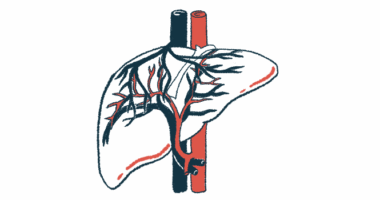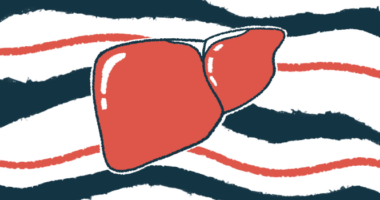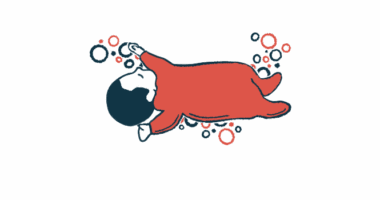Prenatal ultrasound AI analysis IDs biliary atresia before birth in study
Potential new diagnostic tool called 'low-cost, easily accessible, and accurate'

Biliary atresia, a rare liver disease affecting infants, may be diagnosed before birth using a novel artificial intelligence (AI) method that analyzes prenatal ultrasound images, according to a new study from China.
These AI models were found to outperform a group of clinical specialists, some with more than 10 years of experience examining fetal ultrasounds, the researchers noted.
With the assistance of AI, the ability of all specialists to diagnose biliary atresia improved, the team reported, noting that the use of these models may help more newborns receive a timely diagnosis.
AI modeling “achieved satisfactory performance in predicting fetal [biliary atresia], providing a low-cost, easily accessible, and accurate diagnostic tool for this condition, making it an effective aid in clinical practice,” the researchers wrote.
Details of the new development were described in “Transfer learning method for prenatal ultrasound diagnosis of biliary atresia,” a study published in the journal npj Digital Medicine.
Fetal biliary atresia is a congenital liver disease in which the bile ducts, the tubes that transport the digestive fluid bile from the liver to the gallbladder — a small organ beneath the liver that stores bile — and to the intestines, are blocked or missing. Without proper drainage, bile flow slows or stops, a condition called cholestasis. Over time, bile builds up, disrupting liver function and eventually causing damage.
Typical early signs of biliary atresia include jaundice, a yellowing of the skin and whites of the eyes, dark urine, and pale stools.
Surgery best done within 30 days of birth
The primary treatment strategy for newborns with biliary atresia is a surgical procedure, called a Kasai portoenterostomy, to restore bile flow. It has been well-established that surgery within 30 days of birth provides the best chance of slowing liver disease and preventing a liver transplant.
In current clinical practice, a biliary atresia diagnosis primarily relies on blood tests and ultrasound images done after the appearance of jaundice in the neonatal period, or the first month of an infant’s life. However, temporary newborn jaundice is common among healthy babies in the first weeks of life, making an early biliary atresia diagnosis challenging.
“Thus, early identification of [biliary atresia] remains a critical challenge in pediatric hepatology,” the researchers wrote.
To learn more, the team applied AI techniques to try to identify biliary atresia before birth based on fetal ultrasound images.
From hospitals across China, the scientists collected thousands of ultrasound images of gallbladders in fetuses with or without an eventual biliary atresia diagnosis as newborns.
High accuracy seen for AI model using prenatal ultrasound scans
The team developed a new AI model that uses transfer learning, or TLM — an AI technique that applies knowledge gained from one dataset to improve the model’s performance on another dataset. The scientists then tested the model’s accuracy against additional images, culled from three different regions in China, and labeled as A, B, or C.
Across all three test groups, the accuracy of TLM in classifying biliary atresia before birth was 91%. TLM’s sensitivity, or its ability to correctly identify fetuses with biliary atresia, ranged from 88.6% to 84.7%, and the specificity, or TLM’s ability to rule out the liver condition, ranged from 96.8% to 94.1%.
Using a fourth set of images, TLM’s performance was compared with that of a group of ultrasound specialists, known as sonologists. Among them were three senior sonologists with more than a decade each of experience examining prenatal ultrasound images.
Here, the accuracy of TLM in detecting fetuses with biliary atresia was 86.2%, which was significantly higher than the rate achieved by the senior sonologists (60% to 71.3%). Similarly, TLM’s sensitivity was 90%, which was also higher than that of the senior sonologists (35% to 55%).
Further, TLM completed a single image reading and diagnosis significantly faster than the experienced ultrasound specialists (0.02 vs. 8.57 seconds).
With the assistance of TLM, diagnostic accuracy improved significantly for all of the sonologists. A final TLM-based diagnosis was corrected from a wrong initial clinical diagnosis in 35.71% to 68.42% of cases, the data showed. The proportion of patients with an initial correct diagnosis by senior sonologists, but changed to an incorrect diagnosis with TLM, ranged from 4.4% to 17.1%.
Learning from children’s images to optimize diagnostic models for fetal-related diseases represents a breakthrough in prenatal AI diagnostic models.
Lastly, the team created a visual interpretation of the TLM model using color, with ultrasound regions of high relevance marked in red, medium relevance in yellow, and low relevance in blue. From the color spectrum, images of the gallbladder walls, marked in red, increased the likelihood of an accurate diagnosis.
“We believe that this study offers a powerful approach for the prenatal diagnosis of [biliary atresia], addressing the insufficient diagnostic abilities associated with poor prognosis,” the team wrote.
According to the researchers, “learning from children’s images to optimize diagnostic models for fetal-related diseases represents a breakthrough in prenatal AI diagnostic models.”








